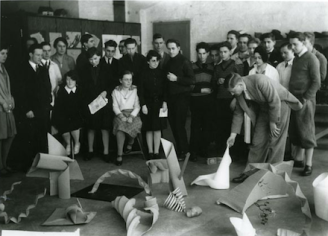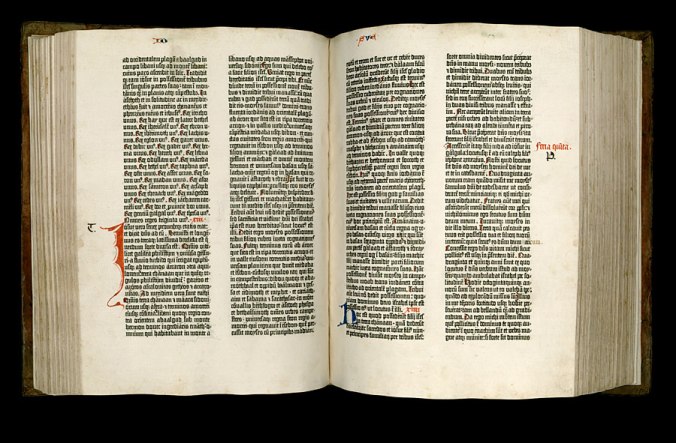Black Mountain College Experiment in Art. By Vincent Katz. (Cambridge, MA: Mit Press, 2013. 328 pp.).
Black Mountain College by Vincent Katz recounts the history of the college’s founding members and the twenty-six years when it was a functioning college in North Carolina. Black Mountain College was a liberal arts school founded by a man named John Andrew Rice. Rice was a Rhodes scholar at Oxford University before gathering a group of educators and idealist to found BMC (Black Mountain College).

Black Mountain College, founded in 1933 in Black Mountain, North Carolina
This experimental college allowed its students to break tradition on “the process of” how art is created and how to use different materials to create these pieces displayed in the book. It was a college for the rebels, the rule breakers, and risk takers. Katz engages the audience to explore a different perspective on art itself and discovering different ways to do something that no one else has done or could have done. He also expresses how art is viewed within society and how BMC has stretched beyond that to achieve a fruitful twenty-six years of existence.
Katz breaks up the book into four essays by Martin Brody, Kevin Power and Robert Creeley. Those essays further examine performances of the students, reviews about the college, and the affect of Charles Olson. One of the main factors that Rice idealized was for the students to control their learning by having a ‘group influence’. “…Group Influence was how people at the college described the collective effect of bringing people out of their shells—sometimes a painful process of dropping pretenses and defenses, other times a warmly welcomed experience of inclusion” (Katz 19). Rice’s theory about bringing individual artists together broke down the psychological system regarding how students learn to improve their work. Receiving feedback from others in a group setting was impactful because that inspired the students to think beyond their original idea, therefore advancing their piece to a higher level.

BMC Students in a “Group Influence”
Black Mountain was a college that allowed students to grow in their strengths, pushed their perspectives on how to creatively improve their pieces and encouraged them to believe that they can still be successful with experimental art. “Theo van Doesburg wrote… an institution where the students themselves were encouraged to create, instead of being taught merely to repeat that which had already been created” (Katz 22). The curriculum that was offered pushed the students to generate diverse concepts and elements that would produce something new. Repeating the past was indeed making that product better for societies use, but being in that rotation can easily have the audience lose interest. Developing a unique piece will grab the audience and keep them entertained until the next clever idea surfaces. Katz analyzes the relationships between student and staff. Not only did their roles switch in a classroom environment, there was also an informal connection that was shared. The relationships that were formed collectively as well as individually shaped BMC and the surrounding community. It took various people from different backgrounds to support and inspire each other while being an artist in a traditional society.
The book is centered on elements that shifted students from producing art with traditional materials that wasn’t satisfying to their project to finding suitable components that expressed their ideas thoroughly. “Art can be more than therapy; it can improve the world. Yet, to be fully engaging, it should be based on the manual interaction with materials, not simply an idea” (Katz 31). Experimental art is merging traditional materials with uncommon materials to work cohesively as one unit. Along with joining these materials, collaborating with others can help to produce an improved segment in the work.
Creating any piece of art starts with the idea, but without the components that make up the piece, there can’t be a complete expression of the artist’s’ vision. The message should be portrayed clearly within the materials presented in the piece. Another element that was characterized at BMC, as well as within the students on a personal level, was being the peculiar group of individuals that continued on the path that wasn’t accepted by most. These students embraced this path and scholarly mentality and used it to their advantage. “…I had the courage to look for something new, and I believe I got that at Black Mountain. The people there were brave. They persisted at a time when nobody wanted them” (Katz 227). Standing out amongst other art colleges or as an artist within a group is brave and courageous, but can also be haunting and exciting at the same time. Being the unique artist delivers opportunities to display your work and ideas while others remain similar. BMC welcomed open-minded people and with this group of people John Rice wanted students to continue with that mindset when creating their art, while acknowledging that there is always more than one way to design.
Black Mountain College was indeed an experiment itself; the college launched a new approach in forming an alternate style of teaching, learning and creating. Students were allowed to be themselves, stand out and become the teacher. They were welcomed with an open-minded environment to explore all options available to them and to expect that nothing is impossible to create. “Art is always a personal moral adventure: we learn courage from art work. We have to go where no one was before us” (Katz 32). Art broadens the artist ideas, skills, and their audience. BMC was shaped around these certain elements that both student and staff had embedded in them while enrolled there. John Rice set the stage for a college that was focused on what life experiences the student took away from their time there. He also wanted BMC to be a place to express open ideas, innovative art pieces and the growth of relationships. John Rice along with fellow educators opened up a new portal for art that current designers are now experiencing. Creative designs that are seen all around the world started with the rebels, the rule breakers, and risk takers that could have been apart of BMC or had been affected by its impact. Recognizing BMC’s transformation toward the current day in age is effective and will continue to be in the upcoming future.






 He used the same weight in line and differentiated the single stops and the transfer points by using sizing. Beck and Wyman seemed to have the same vision in creating a simple, clear and straightforward map to be used by locals and visitors. The map’s purpose is to show people how to navigate themselves around the DMV area. Coming from depending on driving everywhere to being savvy in how to get from point A to point B without confusion is an successful design created by Wyman because using the simple elements like color and shapes don’t usually confuse people if that’s all they have to focus on. The metro map allowed me to learn about other ways of transportation and to be come cultured within my environment.
He used the same weight in line and differentiated the single stops and the transfer points by using sizing. Beck and Wyman seemed to have the same vision in creating a simple, clear and straightforward map to be used by locals and visitors. The map’s purpose is to show people how to navigate themselves around the DMV area. Coming from depending on driving everywhere to being savvy in how to get from point A to point B without confusion is an successful design created by Wyman because using the simple elements like color and shapes don’t usually confuse people if that’s all they have to focus on. The metro map allowed me to learn about other ways of transportation and to be come cultured within my environment. The piece doesn’t follow a grid but follows an asymmetrical pattern. For example on the left side of the painting it’s weighed more with the multiple lines, shapes and various colors. While on the right side there is less chaos because of the amount of space between each element. There is no central focus point instead your mind explores throughout the painting. The painting as a whole is very busy but also very intriguing because each section has a lot going on that I don’t want to miss anything therefore my attention is held longer in one area. The colors, shapes, and lines are balanced because there isn’t one element out weighing the other. Together they create an interesting piece that draws the viewer in closer to try and identify the elements within the painting.
The piece doesn’t follow a grid but follows an asymmetrical pattern. For example on the left side of the painting it’s weighed more with the multiple lines, shapes and various colors. While on the right side there is less chaos because of the amount of space between each element. There is no central focus point instead your mind explores throughout the painting. The painting as a whole is very busy but also very intriguing because each section has a lot going on that I don’t want to miss anything therefore my attention is held longer in one area. The colors, shapes, and lines are balanced because there isn’t one element out weighing the other. Together they create an interesting piece that draws the viewer in closer to try and identify the elements within the painting.